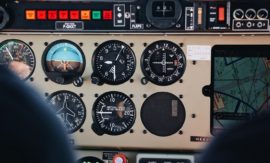Intended learning outcomes: Differentiate between unplanned issuances and planned issuances. Produce an overview on backflush technique and critical point backflush technique.
From central warehouses, goods may be withdrawn only upon presentation of a parts requisition or a picking list. The data that appear on a parts requisition should include
- Order ID and order position
- Item ID
- Reserved quantity in stock units
- Reserved quantity in picking units. For example, an item may be carried in stock in kilos, but picked in meters (for example, materials in bars) or in number of sheets (sheet metal). The factor required for this conversion is maintained as an attribute of the bill-of-material position or, if it is the same for every possible issuance, as an attribute of the item master data.
For unplanned issuances, the parts requisition must be filled out in its entirety.[note 1508] An availability check must precede every unplanned issuance, so that already confirmed reservations of physically available warehouse stocks for other orders can be taken into account (see Section 12.1).
For planned issuances from stock, the data that have to be collected are limited to the actually issued quantity, recorded either in converted units or in stock units. If the issued quantity corresponds to the reserved quantity, the only fact reported is that the material was “issued.”
For a picking list, in a first step only those positions for which the issued quantity differs from the reserved quantity are recorded. Then the so-called backflush technique is used:
The backflush technique reports the picking list itself as “issued,” whereby every (remaining) position on it is reported as issued in the reserved (or produced) quantity.[note 1509].
A critical point backflush technique is a backflush technique performed at a specific point in the manufacturing process, at a critical operation, or at an operation where key components are consumed ([ASCM22]).
Course section 15.3: Subsections and their intended learning outcomes

15.3 Order Monitoring and Shop Floor Data Collection
Intended learning outcomes: Describe recording issues of goods from stock and completed operations. Produce an overview on progress checking, quality control, report of order termination, and automatic and rough-cut data collection.

15.3.1 Recording Issues of Goods from Stock and the Backflush Technique
Intended learning outcomes: Differentiate between unplanned issuances and planned issuances. Produce an overview on backflush technique and critical point backflush technique.

15.3.2 Recording Completed Operations, and the Demonstrated Capacity
Intended learning outcomes: Describe the data collected after the completion of an operation. Identify demonstrated capacity and downtime.

15.3.3 Progress Checking, Quality Control, and Report of Order Termination
Intended learning outcomes: Produce an overview on progress checking, quality control and the quality control sheet. Identify the anticipated delay report and the order termination report.

15.3.4 Automatic Data Collection and Rough-Cut Data Collection
Intended learning outcomes: Produce an overview on Automatic identification and data capture (AIDC), bar codes, RFID. Describe the principle and issues of rough-cut data collection.
